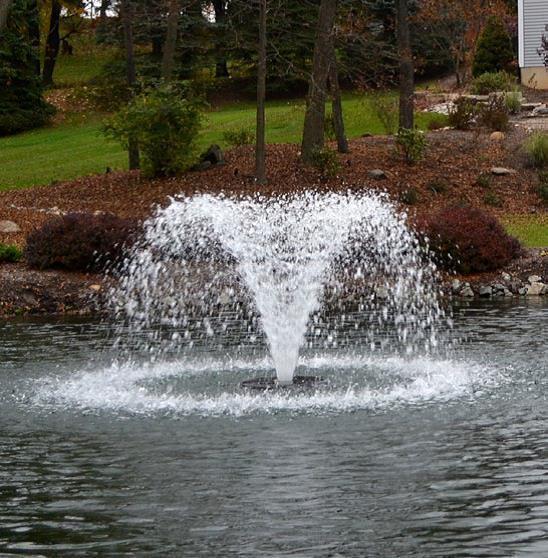Protecting water quality is essential for maintaining a healthy ecosystem in Georgia’s lakes and ponds. Previously, we wrote about how to ensure healthy water quality by targeting and eliminating aquatic weeds. This article will focus on the use of aeration systems for maintaining optimal water conditions.
Identifying the Aeration System for Your Water Needs
One of the most effective ways to protect water quality is through the use of aeration systems. Aeration systems help to reduce bacterial activity and control unwanted algae growth, thereby improving water quality. There are two types of aeration systems available: floating systems and underwater systems.
Floating systems are mechanical and operate by creating water movement on the surface of the lake or pond. On the other hand, underwater systems use compressed air to create water movement from the bottom of the impoundment. Both types of systems are effective, but the size of the aeration system needed must be carefully appraised before installation. A small unit placed in a large lake will provide very little real benefit. A good rule of thumb is at least 2 horsepower per acre of impoundment.
It is worth noting that using an aerator with an enzyme product has been demonstrated to increase the effectiveness of both types of aeration systems. Enzymes break down organic matter, making it easier for the aeration system to circulate water and distribute oxygen. This, in turn, helps to reduce bacterial activity and control unwanted algae growth.
Additional Ways to Protect Water Quality
While aeration systems are effective in improving water quality, it is important to also consider the characteristics of the lake or pond when weighing options for aquatic growth. Often, a review of maintenance operations can significantly reduce contributing factors. For example, the dumping of grass clippings in water bodies should be strictly prohibited, as the clippings provide a source of nutrients and substrate that encourage algae growth. In some cases, existing drainage patterns can be redirected so water flows to natural areas, providing natural filtration. Finally, the establishment of wildlife and water plantings in and around impoundments can help to create buffer areas, which filter out nutrients and sediment from overland flow while also providing critical wildlife habitats.
Fountains are another option for improving water quality; however, they do not generally provide as satisfactory a result as aeration systems. This is because fountains move smaller amounts of water and do not provide as much oxygenation as aeration systems.
In conclusion, the use of aeration systems is an effective way to protect water quality in lakes and ponds. However, it is important to carefully appraise the size of the aeration systems needed before installation and to consider other options such as maintenance operations and establishment of wildlife and water plantings. Protecting water quality is crucial for maintaining a healthy ecosystem that benefits both wildlife and humans. Therefore, any action taken in impoundments should be carefully considered for its impact on the aquatic and ecological system that exist in your lake or pond – and the water we all depend on.



